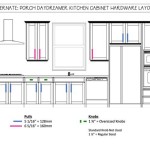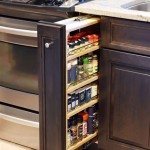Building a DIY 2-Drawer File Cabinet: A Step-by-Step Guide
Organizing paperwork and files can be a daunting task, especially if you lack dedicated storage space. A file cabinet is an indispensable piece of furniture for any home or office, providing a streamlined and efficient system for managing documents. While commercially available file cabinets offer convenience, constructing your own provides a unique opportunity to customize the design, materials, and overall aesthetic to perfectly suit your needs and preferences. This article will guide you through the process of building a DIY 2-drawer file cabinet, equipping you with the knowledge and instructions to create a functional and stylish storage solution.
Planning Your File Cabinet
Before embarking on the construction, it's crucial to plan the dimensions, design, and materials of your file cabinet. This step ensures you have all the necessary components and tools readily available. Consider the following:
- Dimensions: Determine the desired height, width, and depth of your file cabinet, factoring in the size of standard file folders and the available space in your intended location.
- Design: Choose a style that complements your existing décor, whether it's a simple, minimalist design or a more intricate, traditional aesthetic.
- Materials: Select materials that are sturdy enough to support the weight of files and drawers. Common options include plywood, MDF, or reclaimed wood. Consider the desired finish, such as paint, stain, or natural wood.
- Hardware: Choose drawer slides, hinges, knobs, and other hardware that is appropriate for the size and weight of the cabinet.
It's also helpful to create a sketch or a detailed drawing outlining the dimensions and layout of your file cabinet. This visual representation will serve as a valuable reference throughout the construction process.
Assembling the File Cabinet Frame
Once you have gathered the necessary materials and tools, you can begin constructing the file cabinet frame. This step involves cutting and assembling the sides, top, bottom, and back panels.
- Cut the Panels: Carefully cut the side, top, bottom, and back panels to the precise dimensions you determined in your plan. Use a table saw, jigsaw, or circular saw for accurate cuts.
- Assemble the Frame: Join the panels together using wood glue and screws or nails. Ensure the corners are square and the frame is stable and secure.
- Reinforce the Frame: Consider adding braces or supports to reinforce the frame and prevent warping.
Take your time and double-check all measurements to ensure a structurally sound frame that can support the weight of the drawers and its contents.
Constructing and Installing Drawers
The next step is to create the drawers that will hold your files. This involves cutting drawer fronts, sides, backs, and bottoms and assembling them into functional drawers. Consider these important details:
- Drawer Dimensions: Measure the interior space of the cabinet frame and cut the drawer components to fit snugly. Ensure ample clearance for smooth drawer operation.
- Drawer Slides: Install the chosen drawer slides to the sides of the drawers and the cabinet frame. These slides allow the drawers to extend smoothly and easily.
- Drawer Fronts: Attach the drawer fronts to the drawer boxes. These can be simple panels or more elaborate designs with decorative elements.
- Handles or Knobs: Install handles or knobs to the drawer fronts for easy access and pulling.
When attaching drawer fronts, ensure alignment and symmetry for a professional finish. Test the drawer movement and adjust the slides as needed for smooth operation.
Finishing and Refinement
The final step is to enhance the appearance and protect the file cabinet from damage. This includes sanding, staining, painting, and applying a protective finish. Consider the following steps:
- Sanding: Sand the entire file cabinet, including both the exterior and interior, to create a smooth surface for staining or painting.
- Staining or Painting: Apply stain or paint according to your desired aesthetic. Choose a finish that is durable and resistant to moisture and scratches.
- Protective Finish: Consider adding a protective coating, such as polyurethane or varnish, to further enhance the durability and longevity of the file cabinet.
Allow the finish to dry completely before handling the file cabinet. If needed, apply multiple coats for a deeper color or a more durable finish.
Safety Considerations
When working with tools and materials, safety should always be a top priority. Wear appropriate safety gear, including eye protection, gloves, and dust masks. Ensure that the workspace is well-lit and free of distractions. Use sharp, well-maintained tools and follow the manufacturer's instructions for all equipment. And always remember to exercise caution and common sense while working on your DIY project.

Make A Simple 2 Drawer Filing Cabinet

How To Build An Easy File Cabinet Using Plywood And 2x4s

Modular File Cabinets Woodworking Project Woodsmith Plans

Diy File Cabinet Woodworking Plans To Build A Wooden Filing

2 Drawer File Cabinet Makeover For Fabric Storage

How To Build Diy Built In Cabinets With Drawers

Diy File Cabinet Woodworking Plans To Build A Wooden Filing

How To Make A Filing Cabinet Easy Woodworking Project

Diy Filing Cabinet Out Of Wood

Diy How To Build A Filing Cabinet Desk Northstory Co
Related Posts








